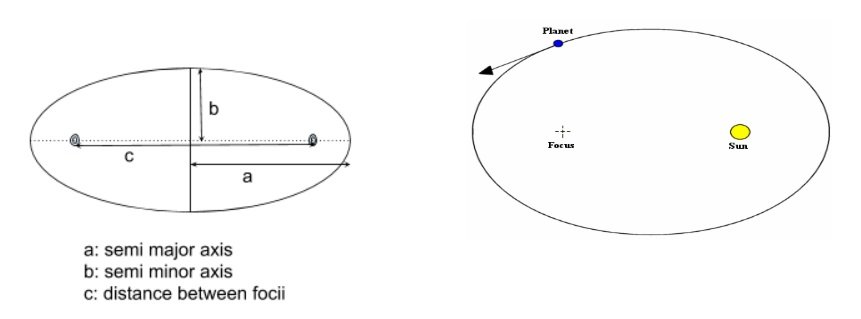Home » EasyPhys » Advanced Mechanics » Motion in Gravitational Fields » The relationship of Kepler’s Laws of Planetary Motion to the forces acting on, and the total energy of, planets in circular and non-circular orbits
The relationship of Kepler’s Laws of Planetary Motion to the forces acting on, and the total energy of, planets in circular and non-circular orbits
Kepler’s Laws of Planetary motion
First Law
The orbit of a planet in the solar system is an ellipse, with the Sun at one of the two foci.

The eccentricity given by ![]() determines the flattening of the ellipse
determines the flattening of the ellipse
Second Law
A line drawn from the Sun to the planet will sweep out equal areas in equal times.

The three arcs shown in the above picture will take same time to cover, because the area of the sectors within the arcs are same.
since average speed over any arc length is given by  , therefore the speed changes in an elliptic path .
, therefore the speed changes in an elliptic path .
The speed in an elliptical orbit is given by 
where :
- M = mass of object at focii
- r =radial distance where speed is measured
This implies that Kinetic Energy changes also.
But the total Energy remains constant
Total energy in keplerian orbit =![]()
Third Law
The square of the orbital period of a planet is proportional to the cube of its mean distance from the Sun
![]()
Extract from Physics Stage 6 Syllabus © 2017 NSW Education Standards Authority (NESA)
